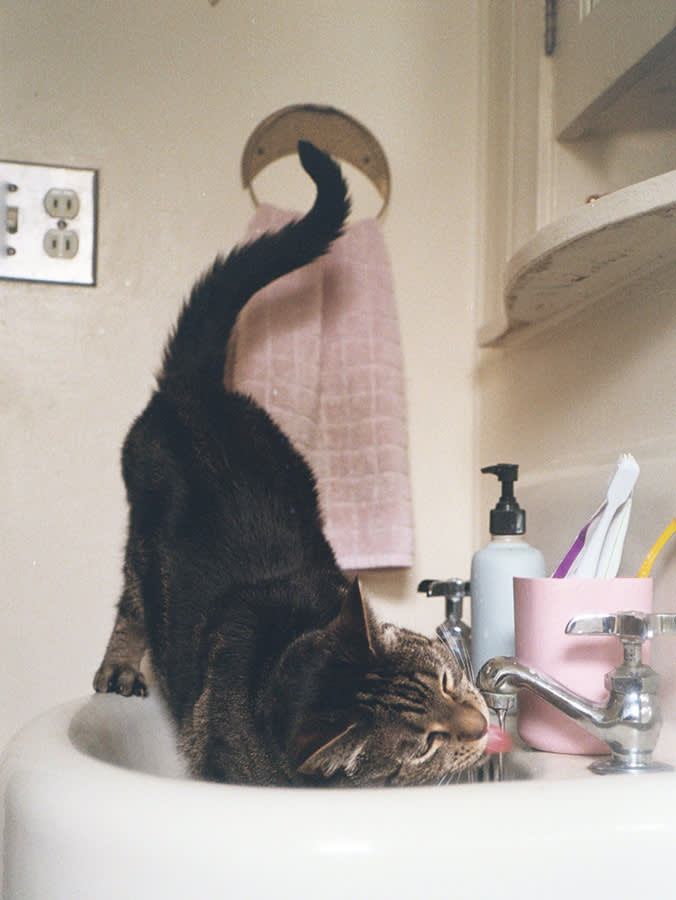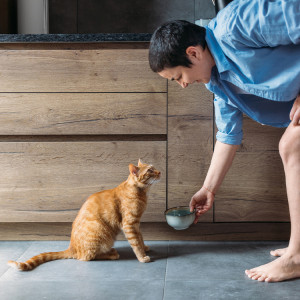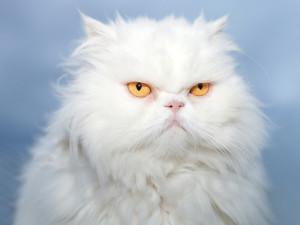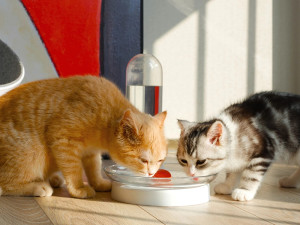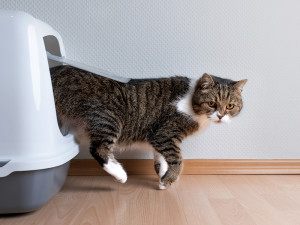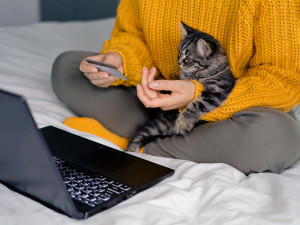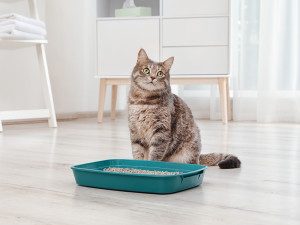Why Is My Cat So Damn Thirsty?
No, not like that. They’re literally drinking a lot of water. Here’s when you should be worried.
Ohh, that good ol’ H2O. And no, I’m not referring to the early aughts epic Australian mermaid show; I’m talking about the actual substance we need to survive. Water is an essential part of a cat’s nutritional needs. Adequate hydration is required for the body to function properly. But what happens when a cat goes from drinking water and minding their business to living at the water bowl? Excessive water intake can indicate underlying health issues for some cats.
How much water should a cat drink every day?
Normal water intake varies based on factors such as age, weight, environment, diet, and activity level. Typically, an adult cat should be taking in about 45 milliliters of water per kilogram of body weight each day. Let’s say the average cat weighs about 10 pounds, or 4.5 kilograms. That means a cat should take in about 205 milliliters (seven ounces) of water each day. This is a little less than a cup of water. Remember that water can be consumed in different forms. We typically picture cats lapping up water from a bowl or a drinking fountain, but canned food is mostly (75 percent) water, and a cat who is fed canned food will not need to drink as much as a cat who eats dry kibble.
How much water is considered too much for a cat?
Water intake is considered excessive when it exceeds 60 milliliters per kilogram of body weight each day, or more than 270 milliliters (nine ounces) for an average adult cat at rest. Excessive water intake, called polydipsia, is usually accompanied by other symptoms. The most common is increased urine production, or polyuria. Makes sense, right? A cat drinks more, so they pee more. Polyuria and polydipsia are so closely linked that they’re often discussed as a single symptom — PU/PD (polyuria/polydipsia).
You don’t need to measure every sip a cat takes to notice a dramatic increase in water intake. When a cat has PU/PD, they may spend way more time at the water dish, empty the water dish more frequently, or try to drink from abnormal places (like the toilet). They often visit the litter box more frequently and tend to produce larger amounts of urine. Some cats will pee outside of the litter box to give a heads-up that something is wrong.
What causes a cat to drink too much water?
A cat may drink more water during hot weather or while recovering from recent vomiting or diarrhea. These causes are typically no big deal and should resolve in a day or so. Diet changes, especially going from canned food to dry kibble, may cause an increase in water intake. This may be long-lasting as the cat adjusts to the decreased water content in their food, but the increase in water consumption shouldn’t be excessive or be accompanied by any other symptoms.
Increased water intake is concerning when you see it with increased urination, lethargy, vomiting, poor appetite, or weight loss. There are many underlying diseases that cause excessive water intake (polydipsia) in cats, but here are the most common causes.
Kidney Disease
The kidneys are responsible for removing waste products and maintaining proper water balance in the body. When the kidneys aren’t functioning properly, they are not able to concentrate urine properly and will produce large amounts of dilute urine, even if a cat is dehydrated. Cats will urinate more frequently and drink more water to compensate.
Diabetes Mellitus
Diabetic cats have an increased blood sugar level due to a lack of insulin or resistance to the effects of insulin. The kidneys typically keep glucose (sugar) out of the urine. When there is too much glucose in the blood, the excess glucose is excreted in the urine. The glucose in the urine will pull extra water with it, leading to increased urination and thirst.
Hyperthyroid Disease
Thyroid hormones are important for metabolism and water balance. When there are excess thyroid hormones, there is an increase in water loss through the kidneys, often causing an increase in water consumption.
Other causes that are less common include:
Urinary tract infection
Liver disease
Increased salt intake
Hypercalcemia (elevated blood calcium levels)
Adrenal gland disease
Pyometra (uterine infection)
Certain medications, like those for heart failure
What can you do if your cat is drinking too much water?
You should head to the vet’s office if you notice your cat drinking and peeing more. The most common causes of polydipsia can typically be ruled out with blood work and a urinalysis. Blood work will provide information on your cat’s blood sugar, organ function, and thyroid hormone levels. Urinalysis will screen for proper urine concentration and the presence of bacteria or glucose.
Your vet might recommend further testing, such as a fructosamine (if diabetes is suspected but not confirmed), urine culture, or imaging (radiographs or ultrasound). Treatment depends on the diagnosis and may range from a short course of antibiotics to a complete lifestyle change with prescription food and long-term medications.
Once these conditions develop, there’s not much that you can do at home without veterinary guidance, but steps can be taken to try to prevent these diseases from developing or worsening. First, make sure your cat always has access to plenty of fresh water. Never restrict water access, especially if they seem more thirsty. Provide an appropriate diet and regular exercise to make sure your cat maintains a healthy body weight because obesity can predispose them to developing diabetes. Keep the litter box clean to reduce the risk of urinary tract infection. Lastly, make sure your cat is getting regular check-ups so any underlying problems are caught and addressed early.
